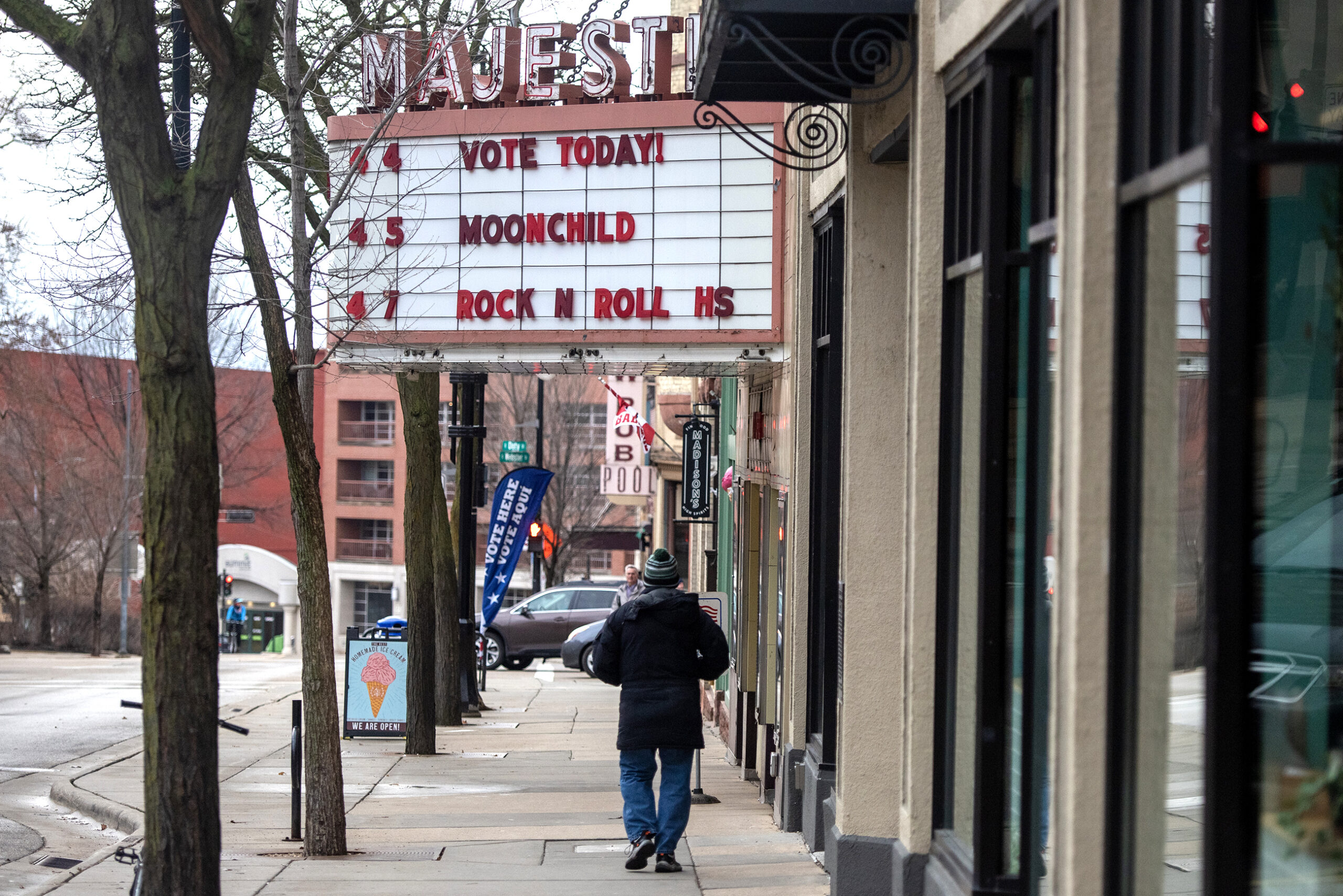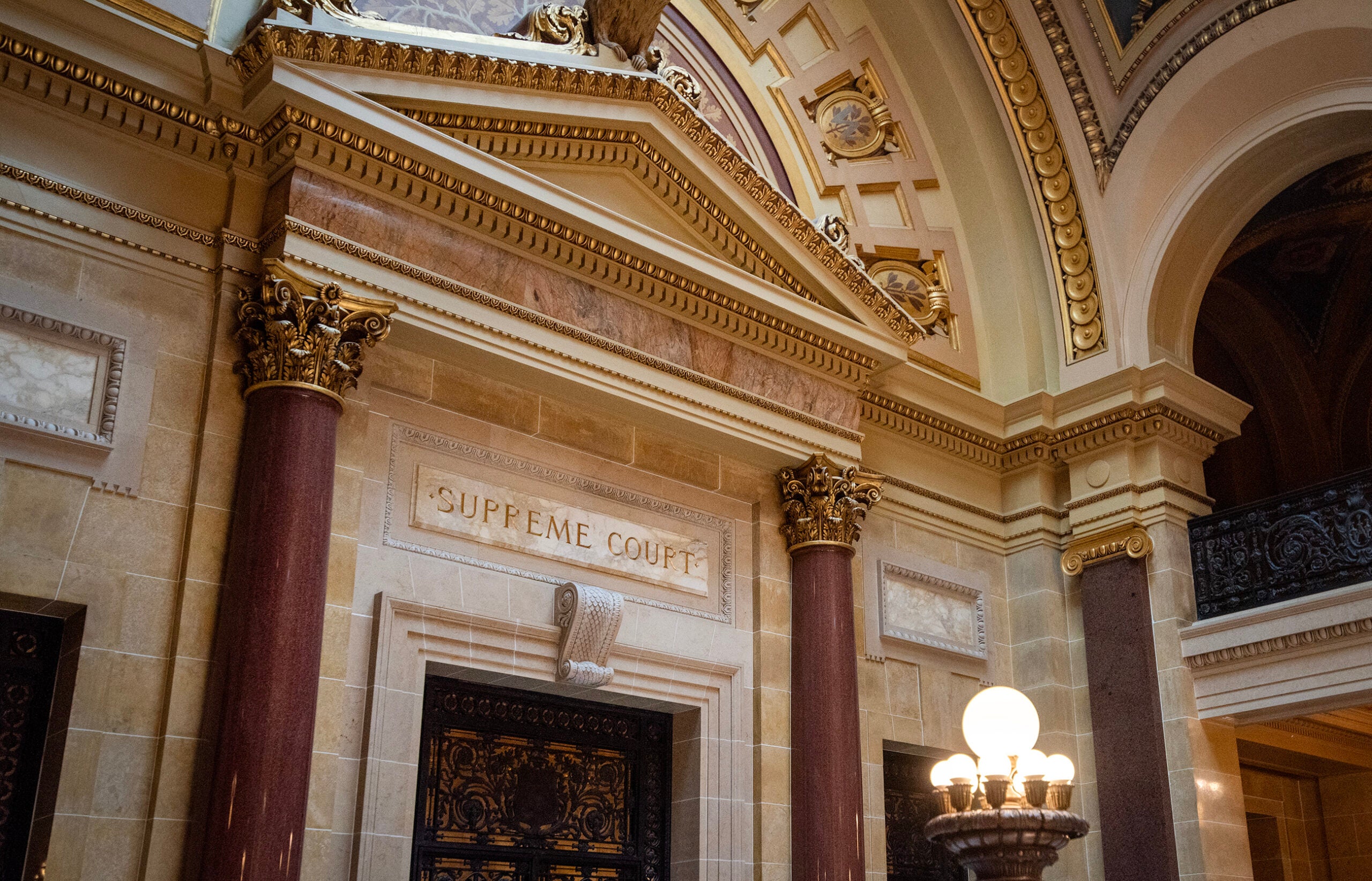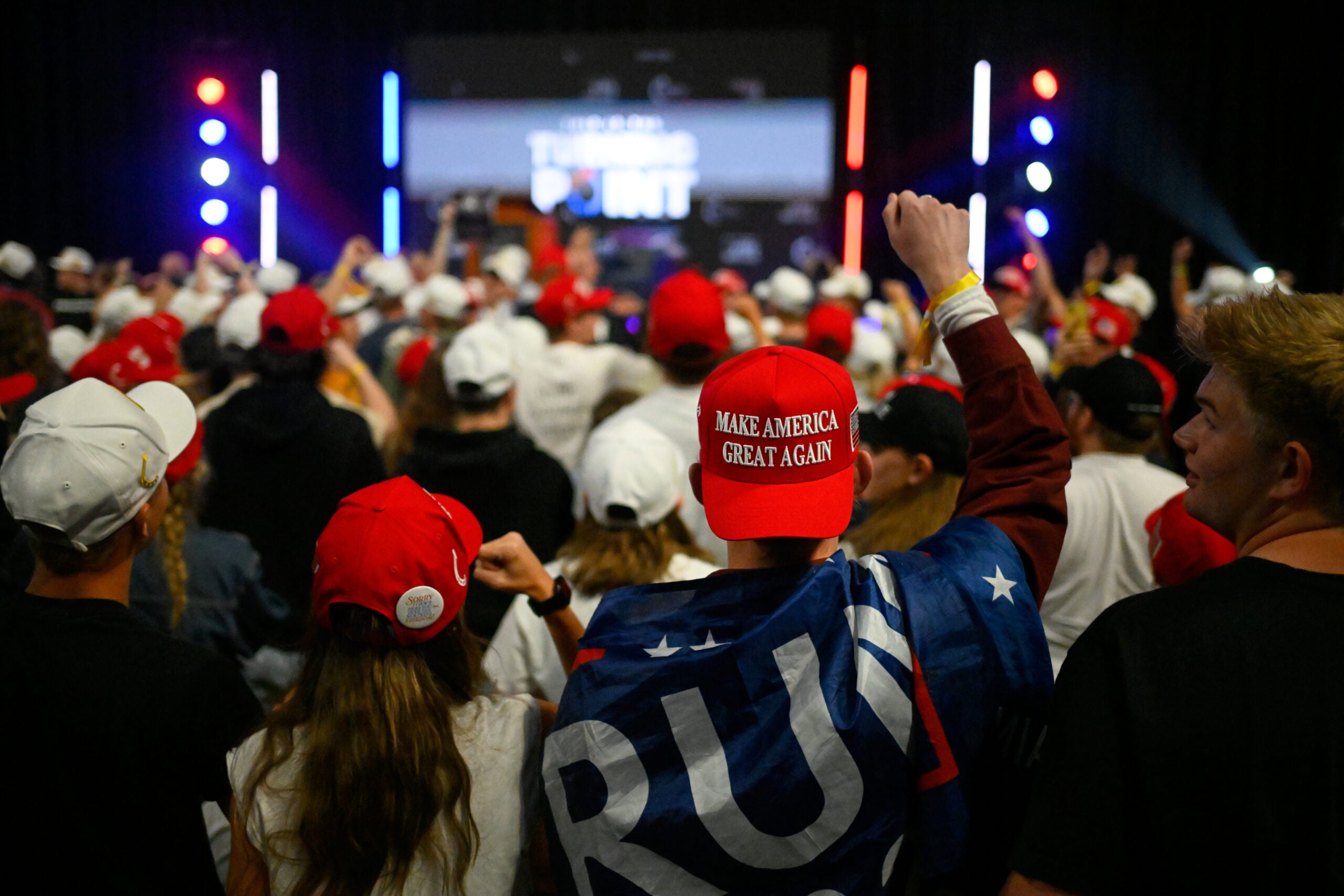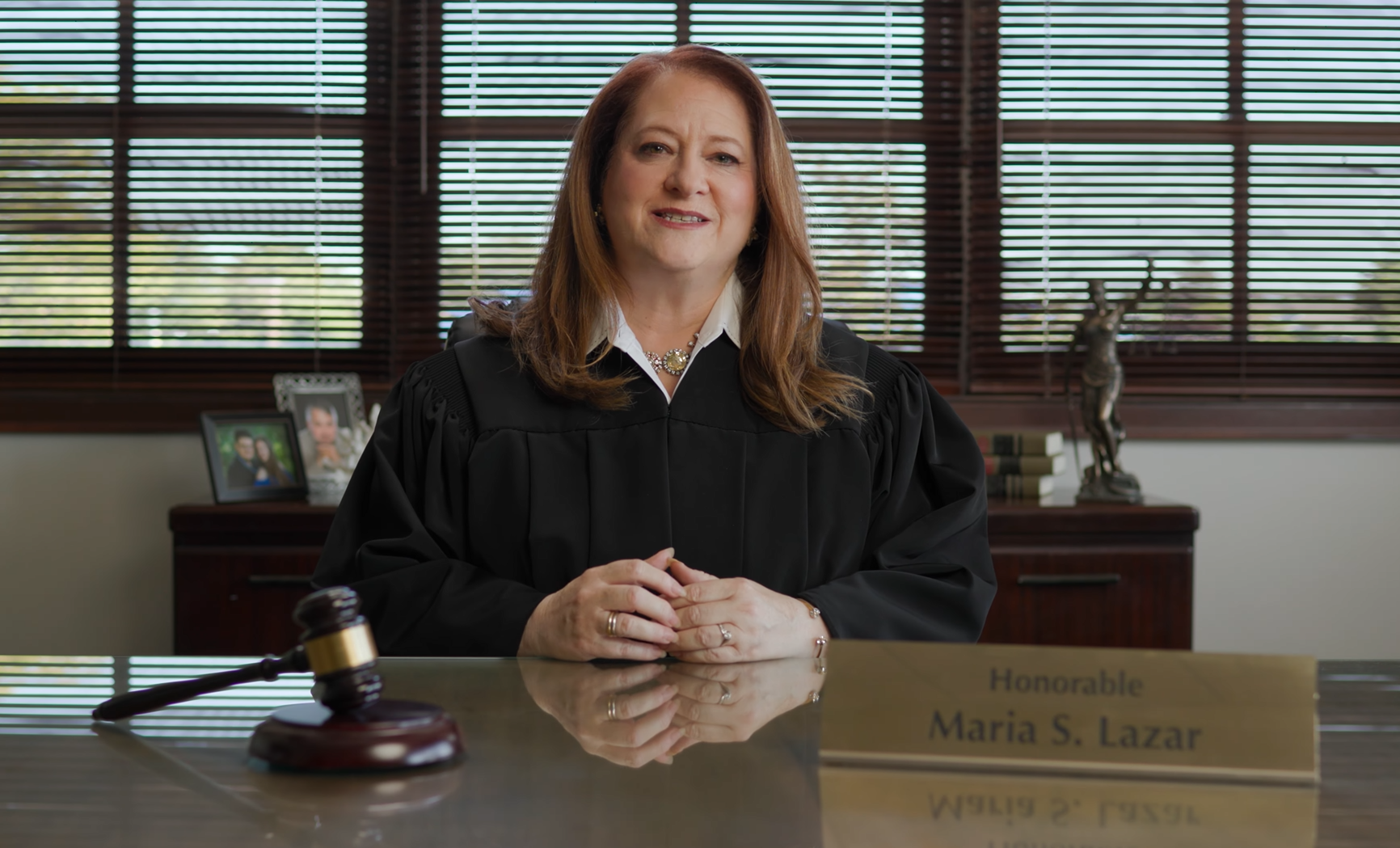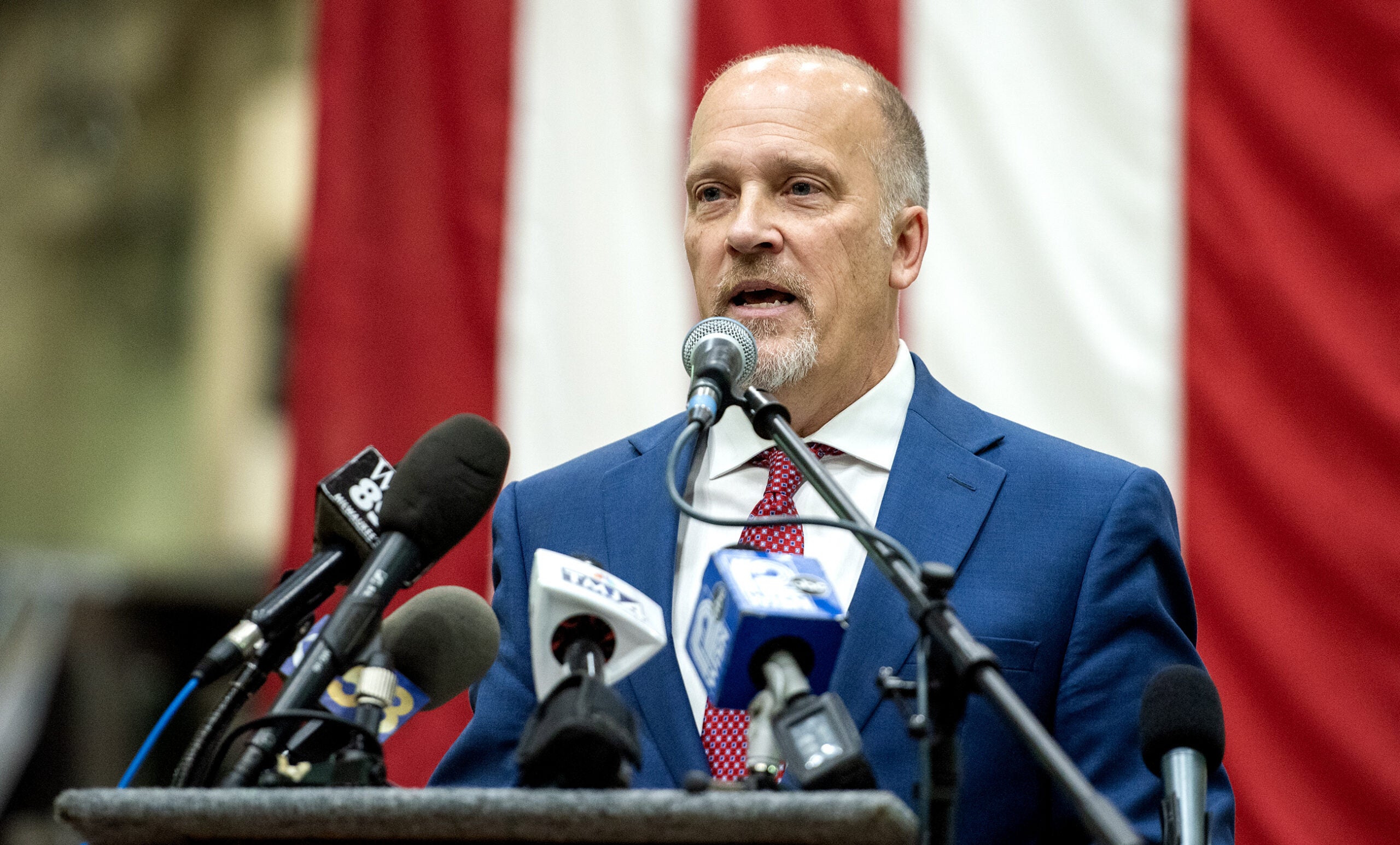An hour before the polls closed on Tuesday, Teddy Landis was standing outside a freshman dining hall on the University of Wisconsin-Madison campus, trying to encourage students who hadn’t voted yet to cast their ballots.
“That was incredibly difficult,” Landis said. “Everyone coming out of the building had an ‘I Voted’ sticker.”
Wisconsin’s election for an open state Supreme Court seat broke turnout records for a spring election. The liberal candidate, Janet Protasiewicz, received more than a million votes, besting her conservative opponent, former Justice Dan Kelly, by 11 percentage points, according to preliminary results.
News with a little more humanity
WPR’s “Wisconsin Today” newsletter keeps you connected to the state you love without feeling overwhelmed. No paywall. No agenda. No corporate filter.
In the past, races for Supreme Court might have gone unnoticed by college voters. Not this year.
“Based on the number of numbers we’re seeing, we believe we were incredibly successful,” said Landis, an organizer for Project 72 WI, a group that was founded in order to turn out young voters in the Supreme Court race. “It’s unlike anything that’s ever been seen in a spring election in terms of turnout on college campuses.”
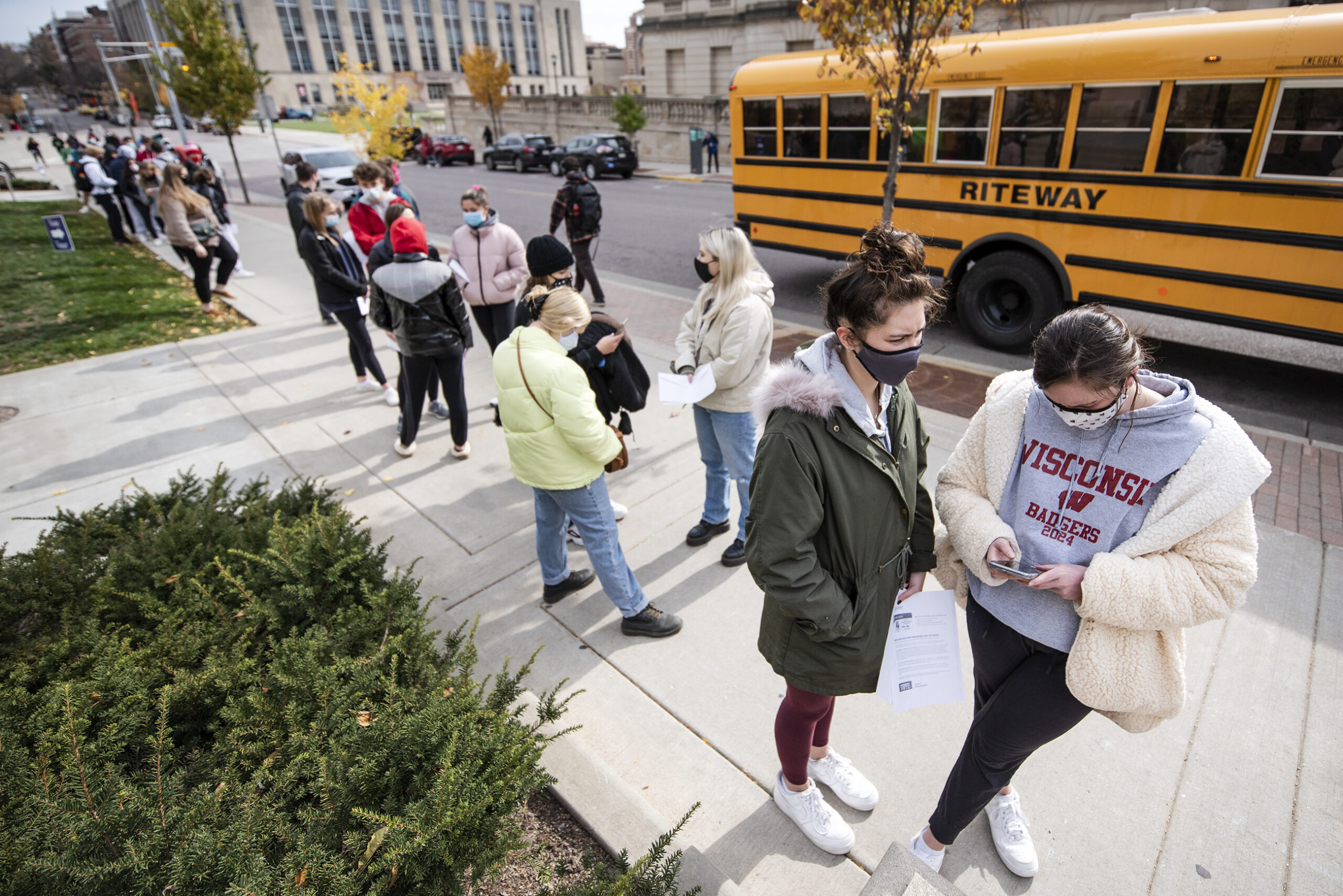
Landis’ group was one of several around the state that focused on turning out young people for what would normally be a low-key election. Others included NextGen America, a national youth voting group, and Leaders Igniting Transformation, a Milwaukee-based group that has a presence on 11 college campuses across the state.
Project 72 WI organized 100 volunteers across 15 college campuses and knocked on 40,000 student doors, according to Landis. The group held events at bars and drag shows, handed out stickers and posted TikToks. Leaders Igniting Transformation handed out voter guides, knocked on 56,000 doors and made 250,000 phone calls. NextGen even had a presence on dating apps.
In a nonpartisan race, these groups focused on issues the high court might take up and how a shift in the ideological balance of the court could affect laws surrounding abortion, voting rights and gerrymandering.
Anecdotally, their efforts appear to have paid off. One viral video from election day shows a line of voters snaking down the hall at the UW-Eau Claire. Preliminary results from that campus reflect what Landis said is a pattern: turnout approaching levels typically reserved for November elections.
And unofficial results suggest that voters in college wards — precincts where most or all voters live on-campus, a proxy for measuring student turnout — largely cast their ballots for Protasiewicz.
These are preliminary numbers based on precincts where voters are all or mostly students, “because that’s the best bellwether for how the general students vote is going,” according to Landis.
While the election was officially nonpartisan, the candidates each received backing from the major political parties. That includes the resources of student organizing affiliated with College Republicans and College Democrats on campuses across the UW System.
Some conservatives expressed concern about student turnout for Protasiewicz.
In a blog post for the free market MacIver Institute, conservative talk radio host Dan O’Donnell said that “Conservatives are in a whole lot of trouble in Wisconsin.” He blamed this in part on an explosion of turnout in the Democratic stronghold of Dane County, saying it was partly due to student turnout at UW-Madison.
“The dramatic increase in the use of mail-in and absentee voting in the wake of the COVID-19 pandemic allowed for far greater numbers of college students to more easily cast their ballots,” he wrote. “(W)ith Democrats’ and liberal special interest groups’ huge cash haul, they were able to hire a veritable army of get-out-the-vote activists to canvass dorms and apartments scrounging up every last student they could find and bring them to early voting locations, which of course Madison’s Democratic city clerk conveniently placed in the dormitories.”
Former Gov. Scott Walker, who now leads Young America’s Foundation, a group aimed at empowering conservative students on college campuses, also tweeted about the role of young voters.
“Younger voters may be the behind the stinging loss for conservatives in WI this week,” he wrote. “We have to undo years of liberal indoctrination.”
Protasiewicz’s support in counties with college campuses even exceeded the percentages hit last November by Democratic Gov. Tony Evers in his reelection victory.
In Eau Claire and La Crosse Counties, both home to UW campuses, Evers won 58 percent of the vote — Protasiewicz won 64 percent. In Brown County, home to the UW-Green Bay, Evers won 47 percent of the vote while Protasiewicz won 52 percent, a rarity in a county typically carried by Republicans in statewide elections.
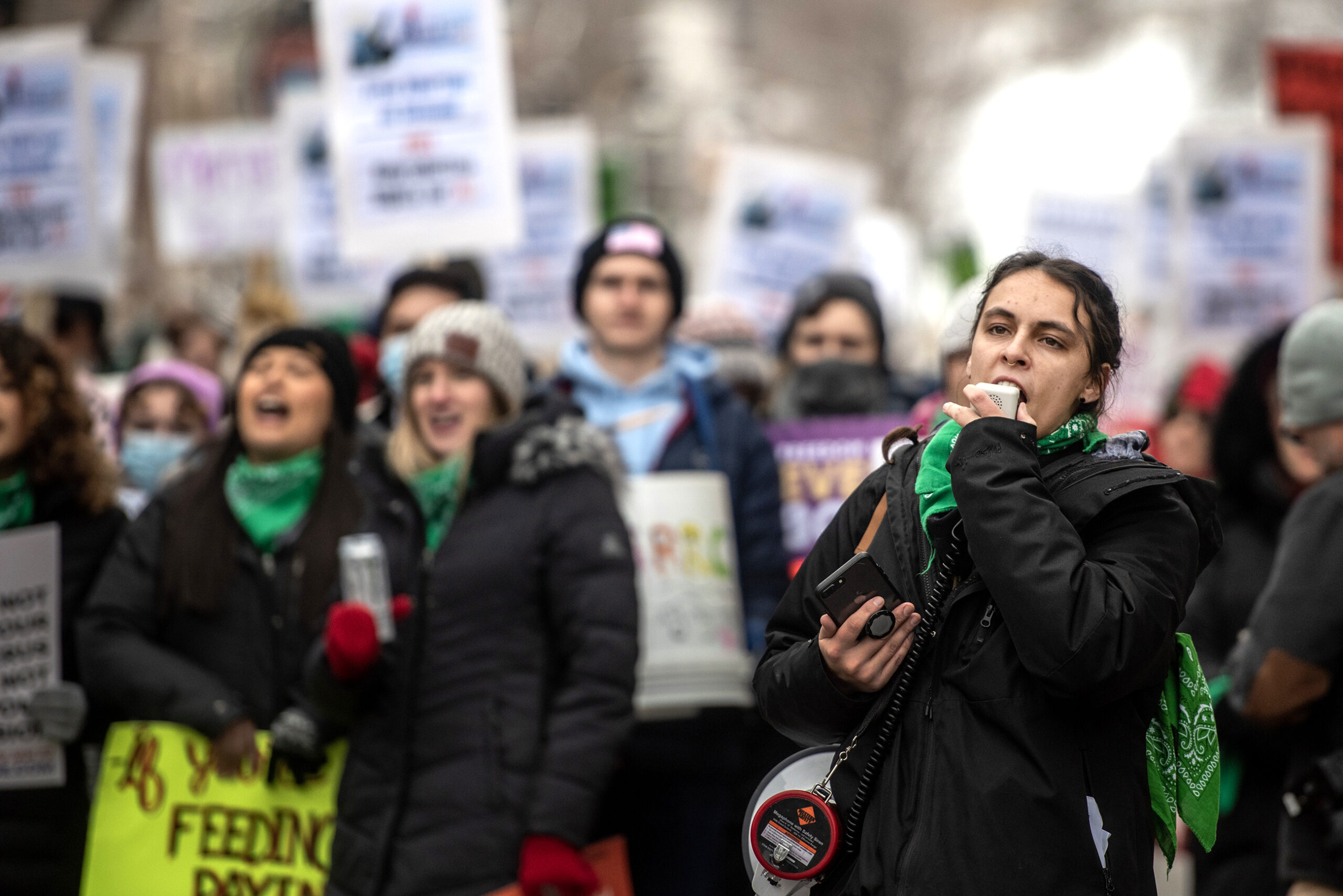
Landis attributes that high motivation to one issue.
“Hands down, abortion is the number one issue that either motivated folks to vote, or helped folks identify that Janet is the person they needed to vote for,” he said. “Abortion isn’t just a hypothetical for students on campus. They are seeing the 1849 abortion ban affects them in their lives already.”
Young voters are also eager to get involved as they emerge from the pandemic, said Lamonte Moore, organizing director for Leaders Igniting Transformation.
“Supreme Court elections typically aren’t sexy,” he said. “I think it was a first-time experience for a lot of students … post-pandemic to be able to engage in this way.”
Youth organizers believe this election was just the beginning, and that young voters will stay engaged in upcoming elections, including the 2024 presidential race and beyond.
“Young people care about what’s happening and the state and future of Wisconsin,” said Moore. “They also are extremely invested in a strong and robust student youth movement here in Wisconsin.”
Wisconsin Public Radio, © Copyright 2025, Board of Regents of the University of Wisconsin System and Wisconsin Educational Communications Board.

